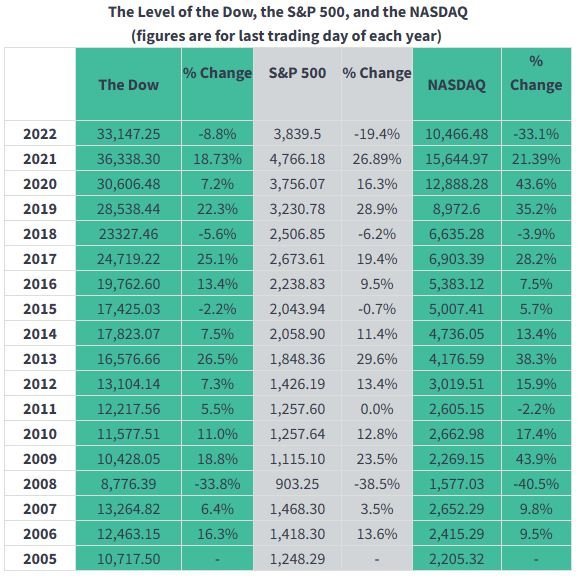Index Funds for Teen Investors (and Kids)
Published: July 21, 2023
Written by Emmanuel Modu, MBA, The Wharton School of Business
Stocks are great, but some teen investors are uncomfortable researching and choosing stocks independently. Some feel overwhelmed by the massive amounts of financial information produced by companies. Index funds may be the perfect investment for teen investors who don't have the time or the knowledge base to choose stocks for their portfolios.
Defining an Index Fund
An index fund is a type of fund that includes a bunch of stocks that try to mimic the stocks in a market index that represents the broad investment market. For example, a popular index fund is the Vanguard 500 Index Fund, which tracks the stocks in the Standard and Poor’s 500, an index of the 500 biggest companies in the United States. Other index funds represent the broad stock market. However, for teen investing, you should stick to the most prominent index funds that represent diverse stock holdings, like those in the Standard and Poor’s 500 Index, the Dow Jones Industrial Average, and the NASDAQ.
Index Funds and Diversification
One of the most important reasons for teens to invest in an index fund is because of something called diversification. Diversification is investing in several different stocks (for example, stocks in various industries) so that a decline in the value of one stock does not necessarily affect the value of the other stock in your portfolio. A broad market index fund hold so many different stocks that a decline in the value of any one stock will not affect the value of the other stocks in the fund. For this reason, teen investors would come to appreciate that index funds are less risky than investing in the stocks of one or two companies.
As a simple example, let’s suppose you bought Amazon stock on July 8, 2021 at its closing price of about $$186.57 (the price it was selling for that day). By December 14, 2022, the stock was down to $91.58 – a 51% decline in value.
By contrast, let’s suppose you bought the Vanguard 500 Index Fund (which relates to the Standard and Poor’s 500 index) on July 8, 2021 at its closing price of about $388.82. By December 14, 2022, the fund price was down to $367.16 – a mere 6% decline in value.
To summarize, Amazon’s stock declined by about 51% between July 8, 2021 and December 15, 2022 but the Vanguard 500 Index only declined by 6% in the same period. As you can see, buying an index fund based on a broad market index can protect you against significant declines in the value of your investments.
Mutual Funds and Exchange-Traded Funds (ETFs)
So far, I’ve used the generic term index funds, but there are two types of funds: mutual funds and exchange-traded funds. They are very similar but the main difference with teen investors is that mutual funds often require a heavy investment upfront – sometimes as high as $3,000. In addition, a mutual fund's share is generally traded once a day, unlike stocks which are traded continuously throughout the day.
By way of contrast, an exchange-traded fund trades just like stocks and is much better for teen investors because the minimum investment is simply the price of a share which is a few hundred dollars. If you sign up for an online broker that allows you to buy fractional shares of stock, you can even invest as little as $5 in an exchange-traded fund.
Specific Index Exchange-Traded Funds for Teen Investors
As I previously discussed, a teen investor should stick to index-based ETFs only. The broad market indexes in the United States for which you can find ETFs are as follows:
The Standard and Poor’s 500 Index – as I have already described, this index represents the price of the top 500 companies in the United States.
The Dow Jones Industrial Average – this index is also considered a broad market index for stocks in the United States; it is the oldest stock in the United States and consists of the stock of 30 large companies.
The NASDAQ – this index is a broad market index that primarily represents movements in the value of high-tech stocks.
Each of these indexes has associated ETFs. Some of the most popular of these include the following:
Vanguard 500 Index Fund (Standard and Poor’s 500 Index ETF; Symbol: VOO).
SPDR Dow Jones Industrial Average ETF Trust (Dow Jones Industrial Average Index; Symbol: DIA)
Invesco QQQ Trust (NASDAQ Index; Symbol: QQQ)
Getting Information on Exchange-Traded Funds
You should get information on each of the exchange-traded funds listed above. I use the website, Finance.yahoo.com to get the price of each share of the ETF and other essential data necessary for your investment decisions.
For data on ETFs, you first need the stock symbols associated with each one. The stock symbols associated with each of the index-based ETFs listed above are as follows:
To get information on each ETF, plug the stock symbol into a financial website like finance.yahoo.com. For example, the information for the Vanguard 500 Index Fund (which has VOO as its symbol) is as follows: Vanguard 500 Index Fund.
You can get the following information from this link:
The current and historical price of the fund;
The fund overview; and
The top holdings of the index fund, how the fund is performing, and other information about the fund.
Consider the Expense Ratios of the ETFs
Not all ETFs are created equally. One important thing a teen investor should consider when investing in any ETF is its expense ratio. Each ETF must be managed by investment advisors who decide what stocks to include in its portfolio. This expense ratio covers the cost of the investment advisors and managers.
For broad index-based ETFs (such as those that track the Standard and Poor’s 500 Index), the expenses are pretty low since all a manager has to do is include the stocks in the index in the ETF pool. So for broad-market index funds, expense ratios are relatively low because they require less attention.
For example, the expense ratios for Vanguard 500 Index Fund, SPDR Dow Jones Industrial Average ETF Trust, and Invesco QQQ Trust are 0.03%, 0.16%, and 0.20%, respectively. These are the hidden costs you are paying for investing in these funds. The cost of the Vanguard 500 Index Fund is particularly low because Vanguard is known for keeping costs low for its clients. The other two ETFs are also low compared to the exorbitant amounts charged by other ETFs.
By way of comparison, an ETF related to financials called the Invesco KBW High Dividend Yield Financial ETF (symbol: KBWD) has an expense ratio of 2.59%. This is criminally high and it means that over a long period of time, you will be burning money just for the privilege of have expensive investment managers manage your ETF.
This is precisely why teen investors should stick to ETFs related to simple broad market indexes like the Standard and Poor 500 Index or the Dow Jones Industrial Average. There are no special skills for investment managers to maintain these ETFs so they are much cheaper for you, and you will benefit in the long run.
Returns Teen Investor Should Expect on Index-Based ETFs
The profit or loss teen (also known as returns) investors should expect on broad market index-based ETFs should be close to the returns on the performance of the indexes themselves. The column labeled “%Change” on the table below shows the returns for the three main United States stock market indexes: Standard and Poor’s 500 Index, the Dow Jones Industrial Average, and the NASDAQ.
Let’s say, for example, you invested in the SPDR Dow Jones Industrial Average ETF Trust (which tracks the Dow Jones Industrial Average) at the end of 2020, your return by the end of 2021 would be close to 18.7% as shown in the table (in the “% of Change” column for the Dow for 2021).
The returns can change from year-to-year, however. For example, if you’d invested $100 in the same ETF at the end of 2007, your $100 investment would have lost you about $33.80 (or 33.8% as shown in the table in the “% of Change” column for the Dow for 2008). Over a long period, however, the overall return of an index ETF based on the Dow would be positive 7% to 9%.


